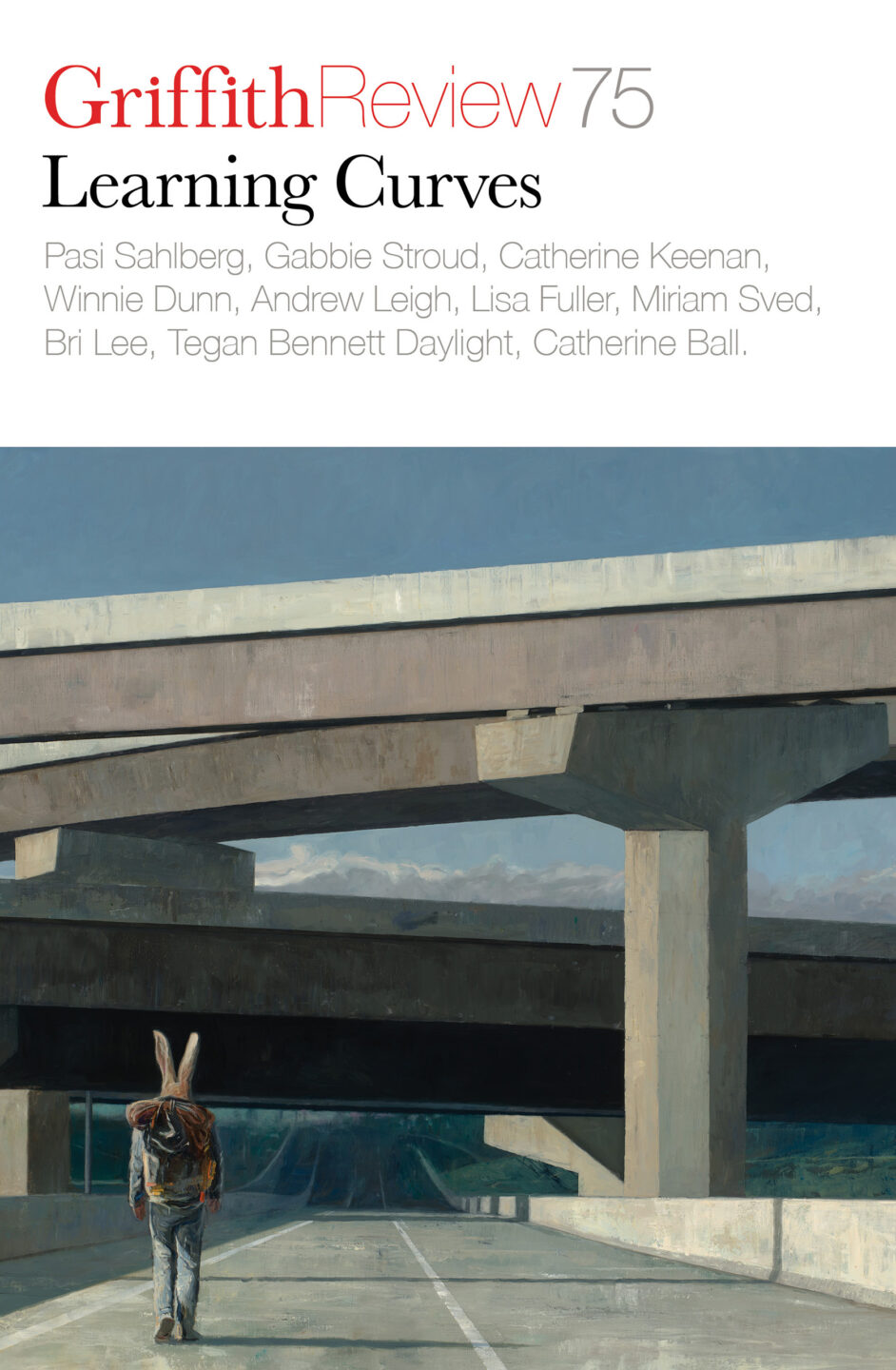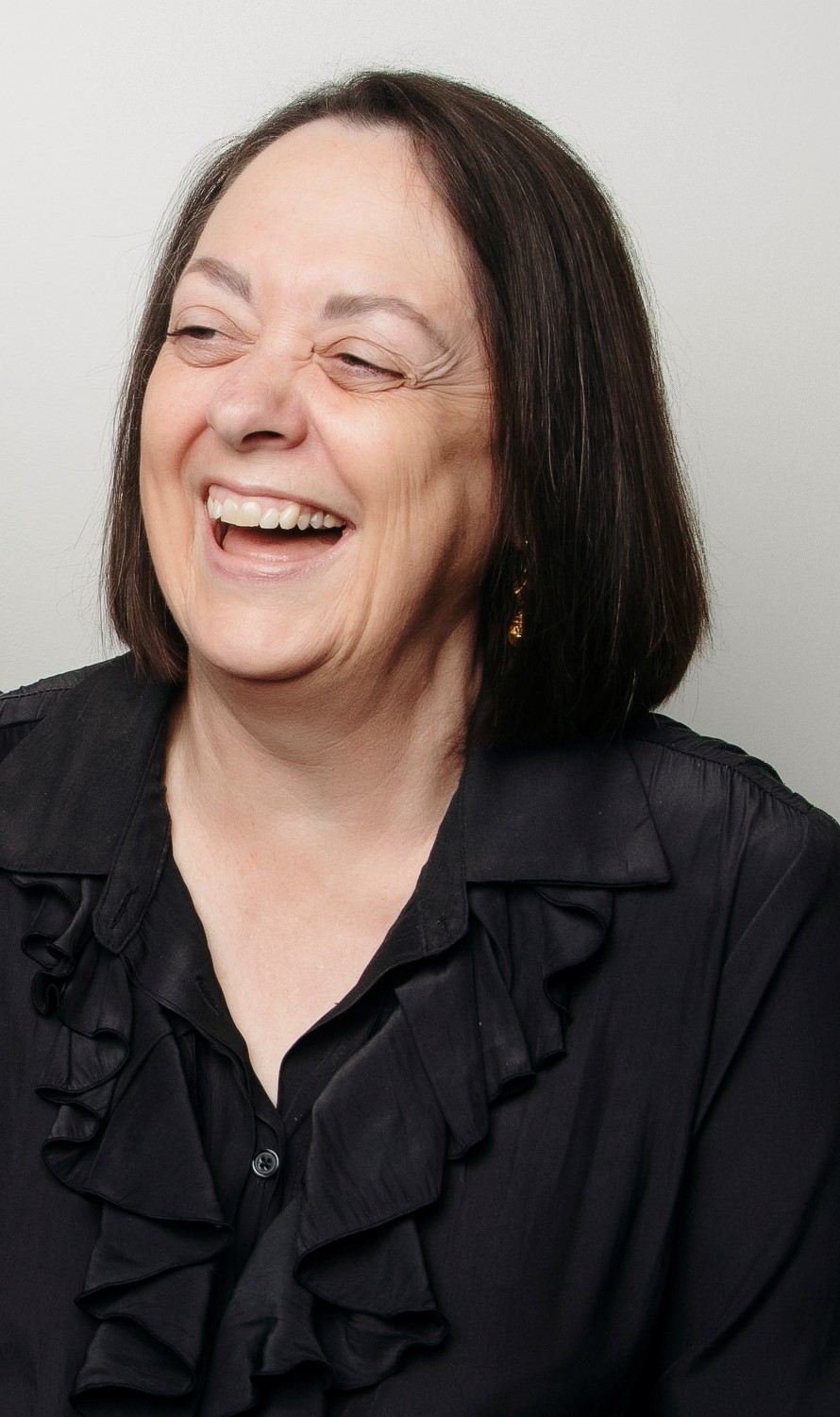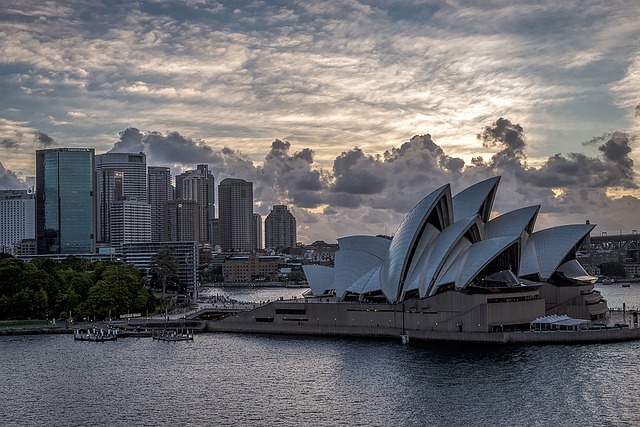Postcards from a liminal zone
Bullocks, drifters, teenagers – and stories worth telling
Featured in

- Published 20220127
- ISBN: 978-1-92221-65-8
- Extent: 264pp
- Paperback (234 x 153mm), eBook
THESE ARE THE twenty-two names in the great-great-grandfather’s bullock team: Rumbler, Rowdy, Trooper, Darlin, Bones, Jack, Tom, Cocky, Sailor, Brandy, Sharper, Fiddler, Foreman, Cherry, White, Mary, Bendit, Liftit, Scratchit, Fetchit, Bloomer, Yellowman. When this child was small, her grandfather – whom she called Gongi – told stories about his grandfather and his family. And about how, coincidentally, his wife gave birth to twenty-two children. They were property owners at a time when there was no electricity or running water, no telephones or cars, no handy medical services. The bullock team – steady, strong and reliable – pulled drays stacked high with bales of wool from the annual sheep shearing at each of the farms in the community. The bales each carried a brand to identify which grazier’s precious cargo was being hauled for sale. The quality of the wool determined the price received.
This was more than a century before her birth, and Gongi told stories of this pioneering past with fondness, enthusiasm and pride. He asked his granddaughter to do something for him so that when he was no longer able to tell his stories, something of his past would continue to be told. He asked her to remember the names of the bullock team. She wrote the names down carefully and in the order that the team walked, side by side, and she memorised it. Whenever she saw him, maybe once or twice a year, he asked her to recite the names. They’re still etched in her memory. They appear without prompting, and when they do she thinks of her large and uncomplicated family huddled around a kerosene lamp, the sound of stillness in the isolation of country life filled with telling. She retells his stories, the trustee of this family history. These stories are now part of who she is.
The man’s mother-in-law always started her stories in the middle, immediately engaging. Where did the characters come from? Why was she telling this story? What was the context? He had to piece this together to make sense of it all. She connected him to events in her life and this gave him a chance to reflect on his own life – emotionally, socially and culturally. In telling her stories in this way, she created a sense of reassurance and wellbeing, even though the content of the stories she told was in flux and many of her narratives were ongoing, no end in sight. He became part of her storying and she part of his.
By contrast, his dad was a quiet person. When he spoke, he had thought about it. Sometimes for a long time. This might have reflected his place as the last of the sibling flock of three; he knew he had to wait his turn. His quietness always distressed his wife, the man’s mum, and the family joke was that it was somehow connected to a mining explosion when he was in Zambia: he was deaf in one ear. He had patience by the barrel. With his grandchildren and great-granddaughter, he entered their play worlds – playing a board game, playing on the beach or painting with them for hours. He was patient with everything around him. The man wondered if this was to do with his father’s love of gardening, the waiting for things to grow. His father had once turned a terrible allotment known for flooding into one of the most productive – the local parish council had wanted to test this quarry manager.
His dad loved expeditions. He could make the smallest outing into an expedition. One summer holiday, when the boy and his brother were about twelve years old, their dad helped them build up their swimming endurance. On a beautiful summer day, when the tide was perfect, they swam with their dad across Housel Bay to Cat Rock. As it turned out, their grandmother was watching from her house above the bay. When she discovered later that the ‘idiots’ – as she called whoever was swimming out there – were her two grandchildren and her son-in-law, there was hell to pay.
When England’s motorways were largely finished, there was a downswing in quarrying. The man’s dad took early retirement and taught himself to paint, first colour-by-numbers and then – over thirty years – more accomplished seascapes of the Cornish cliffs that shadowed where they all swam. Limpets clutch a wave, a crag, a moment; storming waves calm a lighthouse reach. Kids seesaw a summer day of pirate dreams, cutting paper diamonds across the bay. The liminal zone of the tide’s turn, the water brushing onto the shore: here, then there, then here again.
His dad created memories for him. He talked rarely of them – he lived them with his family. It was for them to tell their stories.
The nature of family stories and family storytelling. The work they do in our lives and the things they help us to learn. The people they help us to be.
IT’S BEEN SAID that humanity has been in a collective state of liminality during the global Covid pandemic. Liminal space is an in-between zone or state of being, a transitioning from what is known and familiar through what is uncertain and unpredictable and towards the eventual establishment of a ‘new normal’. Being in this liminal space can make people feel unsettled and insecure: all we can be certain of is uncertainty. This state of liminality may lead to increased anxiety and stress, loss of optimism, and a sense of hopelessness and despair. It may also find us doubting the basis of what has been familiar and certain in our lives, in our worlds, and looking to alternatives for explanations. In this way, we experience decreasing confidence, increasing desperation and unexpected threats to our most cherished ways of being.
We shared our concern about some of the particular impacts of existing in an extended liminal state early in 2021 in an article published in The Conversation. Its title: ‘Fears loom for teens undergoing vital brain development during COVID. Telling stories might help.’ It explored the pandemic’s impacts on a particular cohort of young people at crucial stages of development across cognitive, social, emotional and physical domains. This group is particularly vulnerable given that the repeated disruption, postponement or cancellation of their rites of passage, daily routines, milestones and traditions also disrupts, postpones or cancels the stories through which they understand themselves and connect with each other. Being a teenager is, in a way, already a liminal thing, and so its rites of passage – and the stories associated with them – are crucial cultural markers for teenagers’ ongoing wellbeing.
Connecting the concept of liminality – the transition from the familiar to the unfamiliar – with unmet expectations makes it possible for storytelling to harness a new kind of narrative. These can emerge from within the liminal space, providing a possible panacea to aid healing and create optimism for the future. By exploring some storytelling ideas, thoughts and reflections here – along with some of our own stories – we hope to underscore the positives that accompany the act of storytelling for everyone in terms of learning who and how and where they are.
The art of telling and engaging in storytelling allows us to experience humanity. Stories are fundamental to our growth and empathy, build resilience and wellbeing, and serve as catharsis and release. There are many forms of storytelling: traditional stories; place-based stories; those that focus on respect for different worldviews; trauma and catastrophe stories in which we are challenged by events and crises; stories that enable collective remembering; personal stories of trauma, hope and joy; stories of uncertainty and dilemma.
In many ways, these stories – like the ones shared about the bullock team, with the recollection of names evoking the smoky warmth of the kerosene lamp and the importance of remembering, the mother-in-law and the dad who was deaf in one ear – become worth telling because they are part of our perpetual state of transition and change. Still, our sense of belonging is rooted in these moments. They are part of our ongoing education, of learning how to be ourselves and with others – and they are particularly critical at specific times of life and stages of development, such as those teenage years. But if our individual narratives tell the personal, the family, they also eventually contribute to collective memory.
THE TERM ‘COLLECTIVE memory’ refers to how the public remembers an event or a period of time. This memory becomes a public story that is told and retold, formally recorded, and revisited again and again as the truth. Recently, the campus where one of us works celebrated fifty years as an institution. We commissioned an art installation to mark this milestone, creating a collective historical memory from archives, interviews with ‘old timers’ and memorabilia. The installation tells its story to hundreds of people who walk through our foyer daily: a series of twelve panels hinged together to form a concertina that takes the reader physically and metaphorically on a fifty-year journey. Storytelling through art, storytelling that activates physical engagement – this storytelling is more likely to be remembered, enjoyed and appreciated.
For months after celebrating this fifty-year milestone and sharing this vessel of collective memory, we received messages and stories from past students and staff keen to share their own stories, to add to the pool of memories that will be retained and enjoyed. The installation inspires conversation: these shared representations create a kind of rendering of the past that merges to form a collective identity. These are time machines far more complex than those imagined in science fiction – and with so many more routes to follow. Each family, each cohort of students, each generation will have its own distinct type of machine to make sense of their experience of the world, of schooling, of moments that are important to them.
Wittgenstein, in his Philosophical Investigations, muses on language as we muse here on stories. There, he asked, ‘And how many houses or streets does it take before a town begins to be a town?’ If language can be regarded as an ancient city – a maze of little streets and squares, of old and new houses, of houses with extensions from various periods, and all this surrounded by a multitude of new suburbs with straight and regular streets and uniform buildings – perhaps the collective memories of today’s teens will be found in the posts, images, emojis, and repurposed words and phrases that signify membership of the social media channels so many use to tell the stories of their time. To swipe right, vibe check, double tap, repost, keep a streak – all are ways of networking, connecting, sharing, interacting to tell stories. In this way, these members of the now-named Covid generation, who experienced the pandemic in their formative years, have a unique way of capturing and telling their stories, their experiences, what has shaped them as humans.
Language links directly to a different kind of human storytelling: The Human Library, which is just as it sounds – a library filled with humans, each a ‘book’ that can be borrowed. This Danish concept has now reached eighty-five countries. Real people are on loan to readers, who borrow and then sit with their human book, ask questions, listen and hold conversations. As a storytelling device, this has made an impact by challenging stereotypes and debunking prejudices. It is interesting to ponder how one becomes a book, who is ‘published’ with a story worth telling. The application to become a human book asks:
Do you defy a stereotype? Are you like an open book and do you have valuable experiences that readers could benefit from learning about? Are you motivated to help challenge stigma and stereotypes through dialogue and personal conversations? Then maybe we can publish you to our readers.
We always need more books for our library. We have a network of local organizers and book depots around the world, that not only recycle our books, but also ensure they are well kept in between events.
This shift to be the story as well as the storyteller is one that captures our imagination and our aspiration for storytelling teenagers. If we were to borrow a human book, we would want to hear stories of young people traversing their youth at this unprecedented time. We would want to hear how they were able to bridge the gaps between the despair, anxiety, fear and stress about what they are experiencing and what might be ahead. We would want to hear their stories of beating the odds.
The adolescent years – the second sensitive period of brain development in a person’s life – see the shaping of the brain occur in earnest in response to teenagers’ unique environmental experiences. This process of synaptic pruning results in brains’ unused connections being removed, while others are strengthened and ‘hardwired’. If young people learn to see themselves as human books whose stories are worth telling – no matter how unexpected those stories feel – they’ll not only be demonstrating grit and resilience and growing life skills that include the storying of life. They’ll be hardwiring critical capacities for whichever liminal states they might encounter next.
This way of telling story also refracts the question of an individual’s right to tell a narrative. Some cultures, including Australian First Nations cultures, place individuals within stories of ancestry and connection. As the Victorian Public Sector Commission’s cultural capability guide puts it, individuals are viewed ‘holistically…within a community’:
Aboriginal understanding of the individual is in relation to the family, the community, the tribe, the land and the spiritual beings of the lore and dreaming. A person’s physical, emotional, social, spiritual and cultural needs and well-being are intrinsically linked – they cannot be isolated. The person is not seen as separate, but in relationship to and with others.
In a similar way, contemporary New Zealand – as a country founded upon the 1840 Treaty of Waitangi – acknowledges Māori rights more formally through three principles: partnership (with Māori communities), protection (of Māori knowledge, interests, values and customs) and participation (in relationships and decision-making that realise equality for Māori). When Māori meet for the first time it is customary for them to share their mihimihi in Te Reo (Māori language). This introduction explains who they are and where they are from; they begin with the names of the mountain, valley and river that are dear to them and the name of their particular community. Relatives and ancestors are named, and then the speakers name themselves. The mihimihi is a personal story showing connections to place and community, as long or as short as is wished.
Māori who have moved to cities still talk in their mihimihi of their traditional rural areas, tracing their origins to ancestors and their accompanying geography. And non-Māori also learn how to tell their own mihimihi – without, of course, the same Indigenous claim to place and community. Even after many generations, Pākehā (the Māori word for all settlers and migrants) – like new immigrants – might refer to places outside of New Zealand.
A new arrival might be called konene by a Māori colleague, which means wanderer or nomad and is a tag that can acknowledge a life story that spans, say, birth in Zambia, childhood in England, migration to Norway and then Australia before arrival in New Zealand. It is a little hurtful to begin with, to be assigned the story of a drifter moving somewhat aimlessly from place to place – even though the stop in Norway spanned more than two decades. But then a Māori colleague might explain that konene is like the seaweed drifting with the tide in and out, bringing nutrients and stories. So the idea of being konene can be embraced – both as name and as story.
The stories of Covid learnt by today’s teenagers, as by all of us, offer the opportunity of redefinition. They present the possibility of clothing our stories in garments that everyone can recognise; we’ve all lived our own versions of this time.
IN THIS PANDEMIC, the very absence of stories caused by lost opportunities, cancelled celebrations, permanently postponed events, has created its own particular stories. And it’s important to embrace the narratives of people enduring the uncertainty of pandemic, as these stories will be worth telling again. Think of the famous dialogue between two imaginary refugees, Kalle and Ziffel, who meet in Europe in World War II, in this exchange written by Bertolt Brecht:
KALLE: You could say: disorder is when nothing is in the right place.
Whereas order is when the right place has nothing at all.
ZIFFEL: These days, you tend to find order where there isn’t anything.
It’s a symptom of deprivation.
Brecht’s refugees in flight lived in a world emptied of all meaning – or, more correctly, in a world where all the meaning they had been accustomed to had been discounted, lost and abandoned. This too is a liminal space. In these conversations, Brecht created a safe place, where the two refugees and their audience could locate themselves and look forward to what was coming next – even as the world around remained unstable. Therein lies another function of stories: they mark us in time and place – even if the time is abandoned and the place unstable. They rescue us from meaninglessness and offer a sense of wellbeing, even if it is fleeting. The stories of Brecht’s refugees are not owned by a single person; they connect with many stories of nomads, wanders and migrants. They also interact with stories of those who have lived in one place for decades and centuries.
They connect with all of us.
WHAT STORIES WILL we learn to tell from these past two years? Will they be of quarantine in our own homes, in a hotel or caught in transit in search of refuge somewhere? Will they include details of homeschooling, working from home, essential workers elevated to the status of heroes? Will there be stories of illness, of death, of sadness, of loneliness, of despair? Will they speak of sameness, unchangingness, in ourselves, our world, or will they find a way to acknowledge growth, learning, discovery, transition? Regardless of the liminality of our present time, storytelling is one way to retain the part of living, of experience, that is worth telling, and to serve as a bridge to the new way of being that inevitably comes after the chaos of disruption.
Our narratives develop connections, create trust and serve as catharsis. They allow us to relate to people, places and events that resonate with us. They engender a sense of belonging so that we feel better about ourselves. Health professionals and educators have long appreciated the benefits of personalising and sharing experiences to allow people to work through what might be traumatic – to make sense of it, to understand it and to appreciate what really matters to them. For teenagers in particular, storytelling is a way to recalibrate lived experiences and to provide the perspective required to make meaning of what might seem like disappointments, injustices and deprivations. At the same time, teachers – and parents – need to hone their listening skills and to find new ways of converting advice into stories for their teenagers in so many new media. At times, they’ll feel like beginners and newborns themselves as they learn this critical new work.
No two lived experiences are the same, but stories are what we must keep – even from times as disrupted and transitional as these. Like the child learning the names of a long-gone bullock team, the man remembering himself and his father as they swam across the bay – and the grandmother who looked down from above – stories connect people through time. They recollect and reimagine space and place.
As a source of counsel for teenagers, they offer less of an answer and more a proposal for something that is to be lived and is continuing to unfold.
Share article
About the author

Donna Pendergast
Donna Pendergast is Dean and Head of Education and Professional Studies at Griffith University.
More from this edition

Compulsory wellbeing
Essay SUCH GREAT PAY and all those holidays. Plus you only work from nine ’til three…is often the response a teacher receives when they say...

Footpath rage during lockdown #6
PoetryThe bicycles have me huddling Mum into the garden to avoid their maskless legitimacy. Keep the rules the man shouts. Mum with her walker...

By design
Essay I WAS TREMBLING. Not because I was about to do something risky or scary – quite the opposite. This was a situation I had...